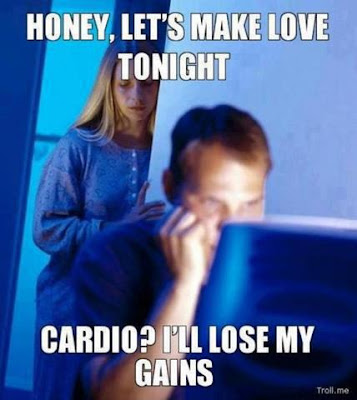Steroids and Other Performance Enhancing Drugs in
Sports Supplements?
Researched and composed by Veeraj Goyaram
Article published 27 July 2013
Article published 27 July 2013
It
is not uncommon for over-the-counter health and sports supplements to contain
steroids and other classified substances that improve performance. Most of us have certainly heard of several
cases in the media about products that have been found to contain controlled
substances or athletes who have been tested positive after the consumption of
over-the-counter supplements. Although I have been an avid follower of the
sports supplements scene for nearly 17 years now I did not fully realise the
severity of this problem until I attended a lecture by Dr. Hans Geyer last
year. It was one of the key lectures at the International Sports and Exercise
Nutrition Conference that took place in Newcastle-Upon-Tyne, England. Dr. Hans
Geyer is from the Cologne Doping Control Laboratory Center for Preventive Doping Research (German
Sport University Cologne) and is heavily
involved with doping control in athletes. He has masterminded research into
analytical tools for detecting controlled substances in athletes, over-the-counter and
black market sports supplements and therefore a lot of Dr. Geyer's work is cited in this article.
This article aims to give you a lowdown on the situation of performance enhancing drugs in over-the-counter supplements. We will also provide a few interesting case studies, including an update of the issue of methylhexanamine (DMAA), the popular pre-workout energy ingredient which we are sure may interest you. Finally, as we are editing this article we just read a fresh news release by the FDA of a vitamin B supplement found to containing steroids. This will be covered as well.
This article aims to give you a lowdown on the situation of performance enhancing drugs in over-the-counter supplements. We will also provide a few interesting case studies, including an update of the issue of methylhexanamine (DMAA), the popular pre-workout energy ingredient which we are sure may interest you. Finally, as we are editing this article we just read a fresh news release by the FDA of a vitamin B supplement found to containing steroids. This will be covered as well.
 |
| Dr. Hans Geyer |
Sometimes, supplements contain "more than what's listed on the labels". Below are the two major ways by which controlled substances can find their way into supplements.
A. Cross-contamination
Supplements
may sometimes be cross-contaminated with controlled substances such that small
amounts of the latter may be detected. These amounts may
possibly be insufficient to give an athlete any real edge on the playing field
but sufficient to have an athlete test positive for particular substances. For example, a number
of positive cases for prohormones in athletes who consumed vitamin supplement
intake were seen. That was due to nutritional supplements being manufactured on the same production line as prohormones without proper cleaning on the
production line between batches. This can lead to inadvertent doping cases.
 |
| Figure 2:Cross contamination detected in supplements from 13 European countries (Geyer et al., 2002) |
On an even more serious note, numerous supplements were detected with high amounts of ‘classic’ anabolic steroids like metandienone (Dianabol),
stanozolol (Winstrol), boldenone (Equipoise), oxandrolone (Anavar),
dehydrochloromethyl-testosterone (Oral Turinabol) etc. This intentional "faking" of products is done in order to
make supplements work better as a means to generate sales. These steroids are either not declared on the labels
or are listed under fancy names. These supplements can be easily purchased
and pose great risks because of the inherent health risks of steroid usage and
the dosages are not listed on the labels so that users have no idea of the
amount of steroids that they are ingesting. Additionally, most of these
steroids are 17-methylated to make them orally ingestible. The addition of the
17-methyl group increases their liver toxicity and carcinogenic properties.
As a side note, those in the business know that many steroids are now sourced from Chinese pharmaceutical companies. Underground labs purchase them, reconstitute and dispense them into vials using very basic equipment and oftentimes under non-sterile conditions. You may easily recognise these vials as they differ from the sealed vials of steroids like legit Deca Durabolin from Organon from Karachi, Pakistan. It is worth noting that several products are also faked with other classified substances besides steroids (e.g. Sibutramine and Clenbuterol in weight loss products) as will be elaborated in the case studies below.
"Some companies are really cunning and what they will do is add steroids (or other performance enhancing drugs like stimulants) to the first few batches of a new product in order to "wow" users and get favourable reviews. Then fearing detection they will cease to use these substances so you are left wondering what happened (sometimes you think your body has got used to the product)"
"Some companies are really cunning and what they will do is add steroids (or other performance enhancing drugs like stimulants) to the first few batches of a new product in order to "wow" users and get favourable reviews. Then fearing detection they will cease to use these substances so you are left wondering what happened (sometimes you think your body has got used to the product)"
Case#1: Designer steroids and the Novedex XT case
Designer steroids, as their name implies, are steroids that have been manufactured from existing steroids by small chemical modifications. The resulting designer steroid is thus unable to be detected by doping tests because the doping controllers are not yet aware of these new steroids. In addition, a subgroup of designer steroids are also steroids that have been developed in the 50s and 60s by pharmaceutical companies and universities for a variety of medical conditions but for reasons of safety (among other reasons) were not commercially exploited. There are literally thousands of different such steroids and some of them were given "new life" when steroid suppliers decided to market them. The chemical structure of these steroids may be available fairly easily and pharmaceutical factories, particularly in China, are quite eager to synthesize these steroids. One common example of a designer steroid is Norboletone, also known as "The Clear" because of its ability to fool drug tests. It was marketed by chemist Patrick Arnold who became known as "The Clear Chemist".
That being said, many designer steroids found their way into supplements marketed as testosterone boosters and aromatase inhibitors. Marketers were able to fool the Anabolic Steroid Control Act of 2004 because these steroids were not on the list of banned steroids. That was until the doping authorities upped their game and began research to develop assays to detect these designer steroids. Perhaps, the most striking case of a common product containing designer steroids was the Gaspari Novedex XT case. Authorities nailed down on Novedex XT after several urine sample testing of athletes showed some signals that indicated steroid metabolites in September 2006. These athletes reported to have taken Novedex XT. After analysis, these positive signals were identified as the "new" steroids androstatrienedione and 6-oxo-androstenedione (Geyer et al., 2007). Novedex XT was advertised as a testosterone booster and aromatase inhibitor and I have heard several reports of the effectiveness of this product. As soon as Novedex would come on the shelves it would disappear and a lot of guys were using it as part of their post steroid cycle therapy. The Rich Gaspari we are a huge fan of is a very decent and nice guy and the products were rapidly taken off the shelves. We can't imagine Rich Gaspari, a highly intelligent man, being silly enough to include steroids in his products. We don't think that he would compromise his reputation in bodybuilding for some easy bucks. Anyway, we now hope that Gaspari's products now conform to WADA regulations.
That being said, many designer steroids found their way into supplements marketed as testosterone boosters and aromatase inhibitors. Marketers were able to fool the Anabolic Steroid Control Act of 2004 because these steroids were not on the list of banned steroids. That was until the doping authorities upped their game and began research to develop assays to detect these designer steroids. Perhaps, the most striking case of a common product containing designer steroids was the Gaspari Novedex XT case. Authorities nailed down on Novedex XT after several urine sample testing of athletes showed some signals that indicated steroid metabolites in September 2006. These athletes reported to have taken Novedex XT. After analysis, these positive signals were identified as the "new" steroids androstatrienedione and 6-oxo-androstenedione (Geyer et al., 2007). Novedex XT was advertised as a testosterone booster and aromatase inhibitor and I have heard several reports of the effectiveness of this product. As soon as Novedex would come on the shelves it would disappear and a lot of guys were using it as part of their post steroid cycle therapy. The Rich Gaspari we are a huge fan of is a very decent and nice guy and the products were rapidly taken off the shelves. We can't imagine Rich Gaspari, a highly intelligent man, being silly enough to include steroids in his products. We don't think that he would compromise his reputation in bodybuilding for some easy bucks. Anyway, we now hope that Gaspari's products now conform to WADA regulations.
 |
| Figure 4: Gaspari Novedex XT was effective because it contained androstatrienedione and 6-oxo-androstenedione (Geyer et al., 2007) |
The Pharm-Tec bust was a very interesting episode. Pharm-Tec was a German company that was very innovative in terms of the delivery formulations it used for "supplements", namely stamps (paper), powders, pills and effervescent tablets. Two supposedly prohormone effervescent products were busted, namely Stanozolon-S and Parabolon-S (note the similar-sounding name to the classic steroids Stanozolol and Parabolan). These products were tested by a German team (Parr et al., 2006) and were respectively found to contain high amounts of the oral anabolic androgenic steroids stanozolol (14.5mg/tablet) and methandienone (Dianabol, 16.8 mg/tablet). This was a clear case of intentional faking of supplement products.
A quite funny thing also happened with Pharm-Tec: they were selling the
product Oxa-17-Dion and the label says that it contains 25mg of
5-alpha-adrostan-2-oxa-17alpha-methyl-17-beta-ol-3-one. That's the chemical
name of Oxandrolone (Anavar)! Another product named Testexx listed
1,4-Andro-4-chloro Stadien 17alpha-methyl-17beta-ol-3-one. That's the chemical
name of Oral Turinabol! In this case what they used the scientific names of
"classical" steroids on the labels as almost nobody understands these
names. That's very funny indeed.
Case#3:
Clenbuterol and Sibutramine in weight loss products
Fat
loss products are sometimes faked with classified drugs too to make them work
better. For instance, German researchers tested a weight loss product named
"Anabolic burner" and found that it contained 30mcg of Clenbuterol
per tablet (Parr et al., 2007). In another case, Polish researchers (Stypułkowska et al., 2011) found that several Chinese weight loss products contained generous amounts of the the class IV controlled substance Sibutramine and its derivatives. Sibutramine is an anorexic drug that was used to treat obesity until its withdrawal in 2010 after it was found to cause cardiovascular events and strokes. Of course, Sibutramine was not listed on the labels of these slimming products which could easily be purchased on the internet.
 |
| Figure 6: The Chinese herbal weight loss supplement "Li Da" (Left) was found to contain Sibutramine. The latter drug was used to treat obesity until 2010. |
As I am editing this article I came a "hot off the press" news release by the FDA (26/7/2013) about a vitamin B-complex supplement found to contain the potentially harmful steroid methasterone, and dimethazine. This product is called First B-50 and is made by Healthy Life Chemistry By Purity First B-50. This investigation followed reports of incidents associated with the consumption of this supplement in which 29 people reported effects like fatigue, muscle cramps and pain. Biochemical analyses revealed abnormal liver and thyroid function values as well as high cholesterol levels. Female users reported unusual hair growth and missed menstruation, and males who used the product reported impotence that was confirmed by low testosterone levels. The press release by FDA can be viewed on this link. The FDA runs an online alert program called "MedWatch: The FDA Safety Information and Adverse Event Reporting Program". It can be accessed here.
 |
| Figure 7: One of the products of Healthy Life Chemistry |
The Methylhexanamine (DMAA) ban situation
I believe the topic of DMAA deserves an article on its own as I followed the evolution of this supplement ingredient with interest. But here is a brief update of the situation: 1,3 DMAA stands for 1,3-dimethylamylamine. It is also called methylhexanamine. On some supplements you will also find it listed as geranium oil extract (on the basis of its plant origin) and Geranamine, the latter being the trade name held by a company called Proviant technologies. This company belongs to Patrick Arnold, the one who introduced DMAA on the supplements market in 2006, following the Ephedrine ban in 2005. In my personal opinion, it is DMAA which gave the greatest boost to the once-lackluster preworkout business. DMAA worked like a bomb, especially in formulations containing Caffeine. Unfortunately, DMAA has been linked to a number of deaths and subsequently the FDA issued a letter of warning to companies selling DMAA-containing preworkouts. Supplement companies resorted to listing Geranium oil extract or Geranium stem as a source of DMAA on products because these botanicals don't fall under FDA. For that purpose, they cited an article by Chinese researchers (Ping et al., 1996) that found that Geranium oil/ stem contains DMAA. As a side note, the same thing happened with Ephedrine. When the latter was under scrutiny, companies resorted to listing MaHuang extract (source of Ephedrine) on product labels in an attempts to keep the bucks flowing while escaping the FDA. Interestingly, recent studies by (Zhang et al., 2012) found that Geranium oil/ stem contains no DMAA and provided evidence that the Chinese study was a flawed study, thereby suggesting that the DMAA in all products is of synthetic origin. There is an ongoing debate among analytical chemists about the tools they use to detect DMAA in geranium extracts. The current stand is that geranium does not contain DMAA while pro-industry chemists state that some cultivars of geranium contains the substance and these cultivars are what the supplements industry uses in their products. Recently, USP labs destroyed a massive amount of Oxyelite pro and Jack3D and had to reformulate their products. Finally, the amount of DMAA in many products was a best-kept secret, falling under proprietary blends. Zhang et al. (2012), was kind enough to analyse these products and disclose the amount of DMAA. In my opinion, it was the amount of DMAA that gave different preworkouts different strengths. For instance, Nutrex Hemorage had 33mg per serving while Jack3D had 142mg per serving.
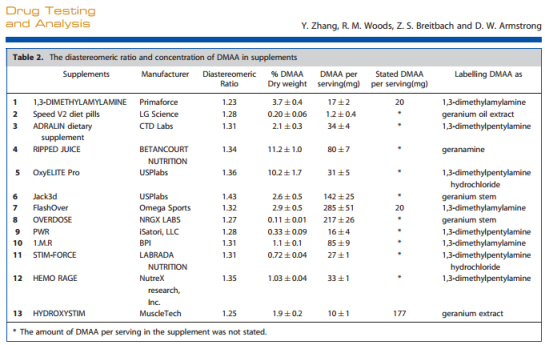 |
| Figure 8: Zhang et al., 2012 discloses the amount of DMAA found in common supplements. In one case the product contained nearly 15 times more DMAA than what's listed on the label! |
Although
the supplement industry is largely unregulated there are still several
responsible companies who go the extra mile to a) source ingredients from
trusted suppliers, b) have their R&D team constantly evaluating product
formulations to see if ingredients conform to World Anti Doping Agency (WADA)
regulations and c) have their products tested at an independent laboratory for
controlled substances.
Summary and take-home message- The presence of banned substances can either be accidental or intentional.
- Accidental contamination can lead to enough banned substance in the body to produce a positive drug test.
- There are many reliable companies who push the envelope further to ensure their products don't contain banned substances.
- The biggest danger with products that contain banned substances is that these are not disclosed on the label and therefore you are clueless about the amount of drugs you are ingesting. If you don't mind your creatine product containing some Dianabol because you are already taking steroids then you are in a bad situation because you don't know how much total steroids you are taking.
Geyer
H, Parr MK, Reinhart U, Schrader Y, Mareck U, Schänzer W. Analysis of
Non-Hormonal Nutritional Supplements for Anabolic Androgenic Steroids—an
International Study -. In Recent advances in doping analysis (10), SchänzerW,
GeyerH, GotzmannA, MareckU. (eds). Sport und Buch Strauß: Köln, 2002; 83. eds).
Geyer
H, Mareck U, Kohler K, Parr MK, Schanzer W. Cross-contaminations of vitamin
and mineral-tablets with metandienone and stanozolol. In Recent Advances in
Doping Analysis (14), Schanzer W, Geyer H, Gotzmann A, Mareck U (eds).
Sportverlag Strauß: Koln, 2006; 11.
Geyer H, Koehler K, Mareck U, Parr MK, Schänzer W, Thevis M. Nutritional supplements cross contaminated and faked with prohormones, “classic” anabolic steroids and “designer steroids”. Effectivness of the Antidoping Fight. 2006 IAAF World Anti Doping Symposium. IAAF: Monaco, 2007; 95.
Parr, M. K., Koehler, K., Geyer, H., Guddat, S. and Schänzer, W. (2008), Clenbuterol marketed as dietary supplement. Biomed. Chromatogr., 22: 298–300.
Ping Z, Jun Q, Qing L. A study on the chemical constituents of geranium oil. Journal of Guizhou Institute of Technology. 1996. 25(1):82-85.
Zhang Y, Woods RM, Breitbach ZS, and Armstrong DW. 1,3-dimethylamylamine (DMAA) in supplements and geranium products: natural or synthetic? Drug Testing Analysis. 2012:4(12):986-990. Available here. Accessed January 7, 2013.
Geyer H, Koehler K, Mareck U, Parr MK, Schänzer W, Thevis M. Nutritional supplements cross contaminated and faked with prohormones, “classic” anabolic steroids and “designer steroids”. Effectivness of the Antidoping Fight. 2006 IAAF World Anti Doping Symposium. IAAF: Monaco, 2007; 95.
Parr, M. K., Koehler, K., Geyer, H., Guddat, S. and Schänzer, W. (2008), Clenbuterol marketed as dietary supplement. Biomed. Chromatogr., 22: 298–300.
Ping Z, Jun Q, Qing L. A study on the chemical constituents of geranium oil. Journal of Guizhou Institute of Technology. 1996. 25(1):82-85.
Zhang Y, Woods RM, Breitbach ZS, and Armstrong DW. 1,3-dimethylamylamine (DMAA) in supplements and geranium products: natural or synthetic? Drug Testing Analysis. 2012:4(12):986-990. Available here. Accessed January 7, 2013.
©,2013, Veeraj Goyaram, Bodybuilding Mauritius. Any reprinting in any type of media is prohibited.
Disclaimer: The Content on this site is intended to be used for educational and entertainment purposes only. It is not intended to be and should not be interpreted as medical advice or a diagnosis of any health or fitness problem, condition or disease; or a recommendation for a specific test, doctor, care provider, procedure, treatment plan, product, or course of action. BODYBUILDING MAURITIUS is not a medical or healthcare provider and your use of this site does not create a doctor / patient relationship. We disclaim all responsibility for the professional qualifications and licensing of, and services provided by, any physician or other health providers posting on or otherwise referred to on this Site and/or any Third Party Site. Never disregard the medical advice of your physician or health professional, or delay in seeking such advice, because of something you read on this Site. We offer this Site AS IS and without any warranties. Correspondence: vicgoyaram@gmail.com





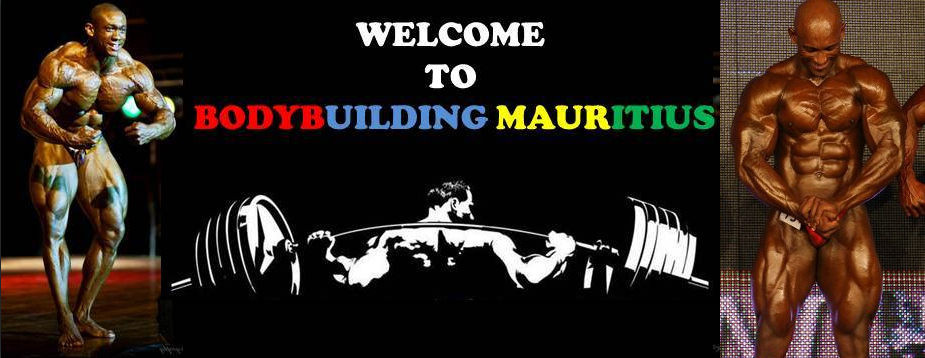
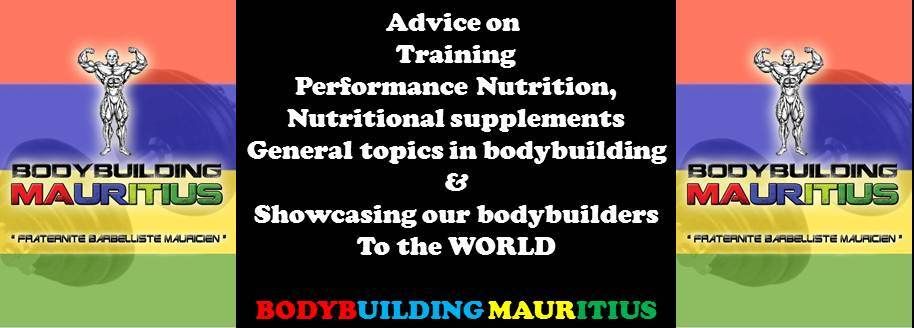

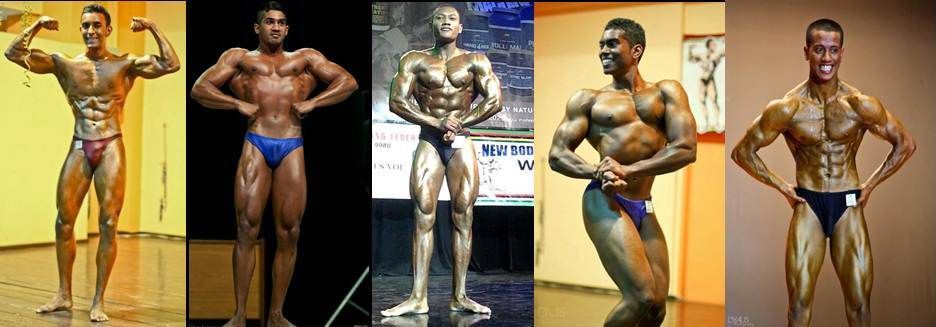

.jpg)
















